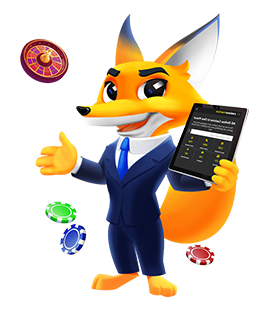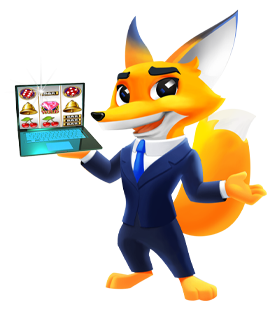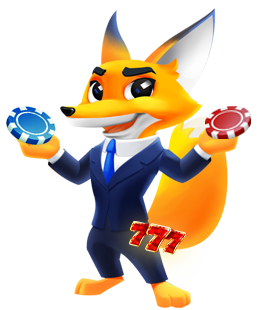How to Deal Blackjack Cards: Easy Tips for First-Time Dealers
Dealing blackjack cards at home can be a fun and rewarding way to enjoy a classic game with friends. While casino rules may seem complex, hosting your own Blackjack game is much simpler with just a standard deck of cards and some basic guidelines.
In this guide, I’ll cover how to deal Blackjack cards, from setup to dealing face up or face down, managing players, and tips to help you deal like a pro. With a little practice, you’ll be ready to manage the game confidently and keep it fun for everyone at the table.
Blackjack Setup Basics
Before you start, you should check if playing Blackjack at home is legal in your country. Be aware of any gambling laws to avoid legal issues. In some areas, even small-stakes games at home can be illegal. If it’s just a casual game without money involved, you’re usually fine.
You’ll need to prepare a few essential tools for playing:
- Standard deck of cards: You’ll need at least one 52-card deck (without Jokers). The number of decks you need depends on the number of players:
- For 2 - 4 players: 1 - 2 decks.
- For 5 - 7 players: 3 - 4 decks.
- For 7 or more players: 6 - 8 decks.
- Chips or tokens: You can use casino-style chips or get creative with coins, candies, or bottle caps. If you're using chips:
- For 2 - 4 players: 200 - 300 chips.
- For 5 - 7 players: 400 - 500 chips.
- You can divide the chips into values:
- White chips: $1
- Red chips: $5
- Green chips: $25
- Black chips: $100
You should start each player with 20 - 30 chips, mostly low-value ($1-$5).
- Table and seating: You should choose a large enough table so everyone has space to play. If you don’t have a Blackjack table, you can use a dining or coffee table. You also arrange enough chairs for all players to sit comfortably.
Tips for more fun: You can use a tablecloth and lighting to set the mood and play some light jazz or lounge music to keep things relaxed. Don't forget to prepare snacks and drinks like soda, cocktails, or finger foods to make the at-home casino experience even more enjoyable.

You might interested in: Blackjack Rules at Home
Rules for Dealing Blackjack
Blackjack is a pretty straightforward game for you to play, but there are plenty of details to consider regarding dealing. With that in mind, I’ve already prepared the basic rules for rookie dealers on how to deal cards in Blackjack home game:
- First, the dealer shuffles the cards before starting the game.
- Each player gets two cards face up, and the dealer gets two cards, one face up and one face down.
- Players take turns deciding whether to hit or stand, split, double.
- After all players finish, the dealer reveals their face-down card.
- The dealer may hit or stand based on their total and house rules.
- The dealer must hit if their total is 16 or lower.
- The dealer must stand if their total is 17 or higher.
- In some house rules, the dealer must hit on a soft 17 (Ace + 6), while in others, they must stand.
- The dealer compares their hand to the players’ hands:
- Players win if their total is higher than the dealer's, up to 21.
- If the dealer wins, players lose their bet.
- If it's a tie, players get their bet back.
- If either the player or the dealer has Blackjack (an Ace and a 10-value card on the first two cards), it is considered a natural Blackjack. The player wins immediately, unless the dealer also has Blackjack, which results in a tie (push).
- Blackjack typically pays 3:2. For example, if a player bets $10 and wins with Blackjack, they receive $15 in winnings.
- If the dealer's face-up card is an Ace, players can opt for Insurance, a side bet that pays 2 to 1 if the dealer has Blackjack. However, this option increases the house edge.
- Some house rules allow players to surrender their hand and lose only half their bet. This option is generally available before the dealer checks for Blackjack.
- If a player’s hand exceeds 21 points, it is a Bust, and they lose immediately, regardless of the dealer's hand.
Step-by-Step Guide to Blackjack Deal Cards
A step-by-step guide on how to deal Blackjack cards below will help you understand the process and make sure the game runs smoothly. I’ll take you through each stage, from shuffling the cards to dealing the hands.
Step 1: Shuffle the Cards
Here’s how you shuffle the cards properly to ensure fairness:
- Shuffle the cards: You mix up the deck thoroughly to make sure the cards are well shuffled.
- Cut the deck: As a dealer, you ask one player to split the deck by placing a cut card in the middle, ensuring the cut is not too close to the top or bottom.
- Place the cards in the shoe: Put the shuffled deck into the shoe, or keep it in a pile if you don’t have one.
- Burn the first card: Before you start, you can take the first card from the deck and discard without looking at it. This is known as the burn card, and it won’t be used in the game.
Note: When playing at home, you can decide whether or not to include the burn card, but it’s standard practice in casinos to ensure fairness.
Step 2: Ask Players to Place Bets
In a home game, make sure all players place their bets before dealing. Players can put their chips or play money in front of them, either in a small circle, a box if you have one, or just next to where their cards will go.
Any player who doesn’t place a bet before the Blackjack card deal starts, they won’t receive cards and cannot join in that hand. As the dealer, you don’t need to place a bet, as you're acting as the house.
Note: Remind players about side bets like Insurance (if applicable) and explain payout terms before the game begins.
Step 3: Start Dealing the Cards
After the players have placed their bets, you can start deal from the dealer's left to right (start dealing clockwise)
- You will deal one face-up card to each player.
- Then, you deal yourself a face-down card. You should keep the card hidden until it’s time to reveal it, and don’t peek when you take it from the deck.
- Continue by placing a second face-up card in front of every player.
- Finish by dealing yourself a face-up card.
So you just keep in mind that each player will have two face-up cards, while the dealer will have one face-up card and one face-down card.
Note: If a player gets an Ace and a 10-value card (Blackjack) in the initial deal, it’s considered a natural Blackjack. They win immediately unless the dealer also has a Blackjack, resulting in a tie (push). No further actions are taken for that player.

Step 4: Manage the Game Flow
Once the cards are dealt, you will ask each player what they want to do: hit, stand, double down, surrender, or split.
Player’s Turn
- If a player hits:
- As a dealer, you add another card following for the player.
- Players can hit as many times as they want, as long as they don’t exceed 21.
- After hitting, a player cannot split or double down. They can only hit or stand.
- If a player stands: You just move on to the next player. They won’t get any more cards.
- If a player doubles down: Player gets one more card and must stand. They must also double their bet by placing a second wager. Place the new card sideways to indicate the double-down action.
- If a player spits: You must deal and play out the left hand first, then move to the right hand. For example:
- When the player has a pair of 6s, 7s, 8s, or 9s, they can choose to split them into two hands. You should ask the player to double their bet by placing an equal wager for the second hand. Additionally, if the player has a pair of 5s, this hand is usually not split. The dealer should treat it as a normal hand.
- You will deal to the left hand first and let the player play it out this hand completely (hit, stand,...) before moving on.
- Once the left hand is finished, you move on to the right hand. You shouldn’t alternate between the two hands during the game.
- You can also allow splitting after a split, that’s entirely up to you when you set the rules for home game.
- If a player surrenders: You will collect half their bet and move on to the next player.
Note: Players who bust (exceed 21) lose their bets immediately, and their cards remain on the table until the round ends.

Dealer’s Turn
When all players are done with their turns, it’s your time to reveal your hand. As the dealer, you take your face-up card and slide it under the face-down card and flip it over smoothly to show your total.
You can follow fixed rules:
- Hit if your total is less than 17.
- Stand if your total is 17 or more.
- Decide ahead of time whether to hit or stand on a soft 17 (Ace + 6). Most casinos require hitting soft 17, but you can set your own rules for a home game.
- If the dealer busts, all remaining players win automatically.
Step 5: Determine Winners and Payouts
You will start with the leftmost player and compare their hand to the dealer’s:
- Player wins: If the player’s hand is stronger than the dealer’s without exceeding 21, pay them 1:1. This means their payout equals the amount they bet.
- Player loses: When the player’s hand exceeds 21 (busts) or the dealer’s hand is higher, the player loses their bet.
- Push (Tie): The player’s total matches the dealer’s, it’s a tie. The player gets their initial bet back.
- Blackjack: If the player has a blackjack (two cards totaling 21), you pay them at the Blackjack payout rate of 3:2 as per house rules.
Tip: Handle bets systematically. Use chips matching the player’s stack color, swipe your fingers to match their stack height, and ensure all used cards are collected neatly into the discard pile.

How to Deal Blackjack Cards in Specific Scenarios
When I go over how to deal Blackjack cards, it's important to note that the approach can vary based on the number of players or the setting. Each scenario calls for small adjustments to keep the game flowing smoothly and funny for your home game.
- Dealing with 2 Players
With two players, the process is simple and fast. I distribute two cards face up to each player, including myself (one card face up and one card face down). Then, I check my face-down card, adding its value to the face-up card to determine my total. Based on that, I decide whether to hit or stay. During the game, I keep the game moving smoothly, ensuring both players enjoy it and the game stays fair.
- Dealing with 3 or More Players
Here's how I handle the dealing process depending on the number of players:
- I deal two cards to each player, including myself.
- That gives us 3 hands if you are dealing with 3 players in total to manage.
- Afterward, I shuffle the deck before moving forward with the game.
When there are more players at the table, I always pay attention to the timing between each deal. It’s important to keep the game moving without rushing. So that everyone has enough time to make decisions to play the game.

Tips to Deal Blackjack Like a Pro
There are several key tips that can help you take your card dealing skills to the next level. With a bit of practice, I’m sure you’ll find yourself dealing like a pro in no time.
- To deal like a pro, you should hold the deck correctly by gripping the bottom with one hand and the top corner with the other. Keep the deck away from the players to avoid revealing any cards. When dealing, aim to deal smoothly from the center of the deck with a controlled motion to keep everything neat.
- Deal at a steady pace that’s not too fast, allowing players enough time to think and make their decisions without feeling rushed.
- At the start of each round, you should clearly explain the rules, especially for new players. You should always stay calm, respectful, and gentle when interacting with the players. By observing the group's mood, you can help maintain a relaxed and enjoyable atmosphere throughout the game.
- You can practice by setting up games with friends to get comfortable with real-life dealing situations. If needed, you can also use an automatic card shuffler to focus on improving your dealing technique. Regular practice in different scenarios will help you develop your skills and reactions more naturally over time.
During the dealing process, mistakes may happen, and that's expected. Just take your time and don’t worry about them too much!

FAQs
How many cards are dealt in Blackjack?
In Blackjack, each player is dealt two cards face up, and the dealer also gets two cards, one card face up and one card face down.
What happens if you make a mistake when dealing?
Mistakes can happen while dealing Blackjack at home, like miscounting the cards or making an incorrect payout. If you make a mistake, just correct it and move on, it’s part of the game. However, if mistakes keep happening, it might slow down the fun.
To avoid this, you should stay calm and keep your focus. Be patient with each other, and if something goes wrong, handle it smoothly. With a little practice, I think you'll feel more confident and deliver a fun and smooth experience for everyone at the table. The goal is to enjoy the game, so don’t stress over small errors!
Do you deal with blackjack cards face up or face down?
In Blackjack, players' cards are usually dealt face up, allowing everyone to see the hands and strategize accordingly. However, the dealer has one card face down (the hole card) and one card face up, creating uncertainty for players who must guess the dealer’s hidden card. This setup adds strategy to the game, as players make decisions based on the visible card and their guess about the dealer’s hand.
Conclusion
With this detailed step-by-step guide on how to deal Blackjack cards, dealing is all about following the right steps, from shuffling the cards to dealing face-up cards to each player, and ensuring the dealer follows the proper order. It's crucial to make sure that everyone understands the house rules and stick to them throughout the game.
To enhance your skills, you should practice dealing regularly to become comfortable with the mechanics. You also stay focused and maintain a professional attitude to create the best possible experience for the players.
















